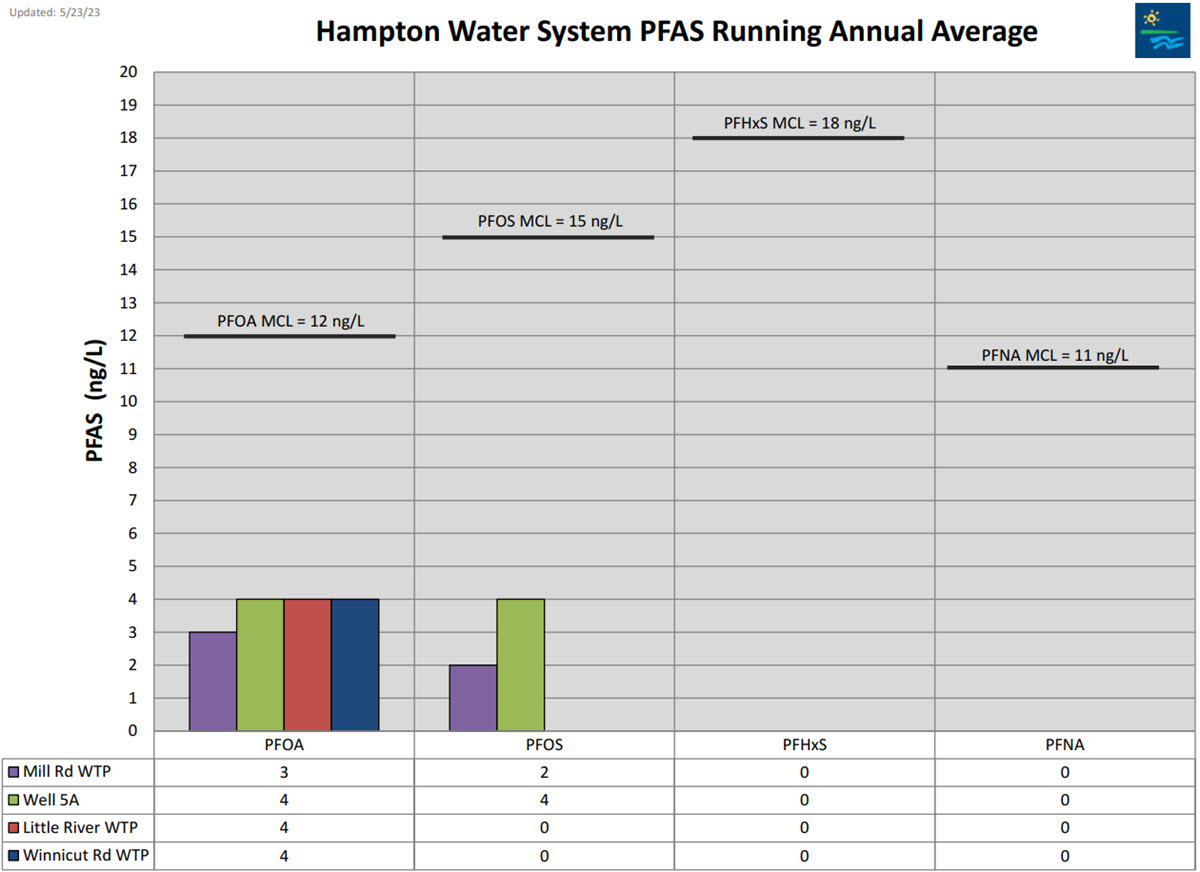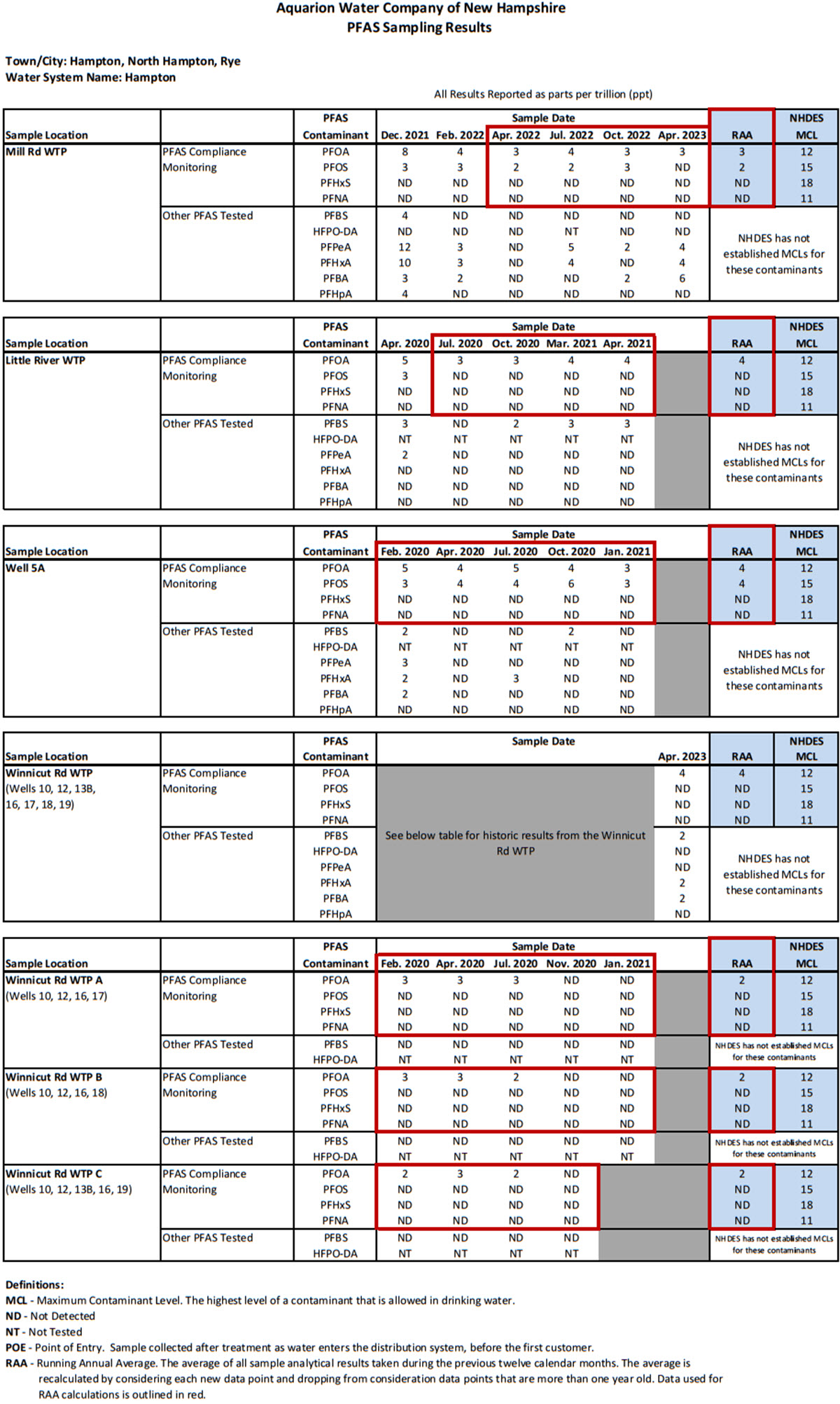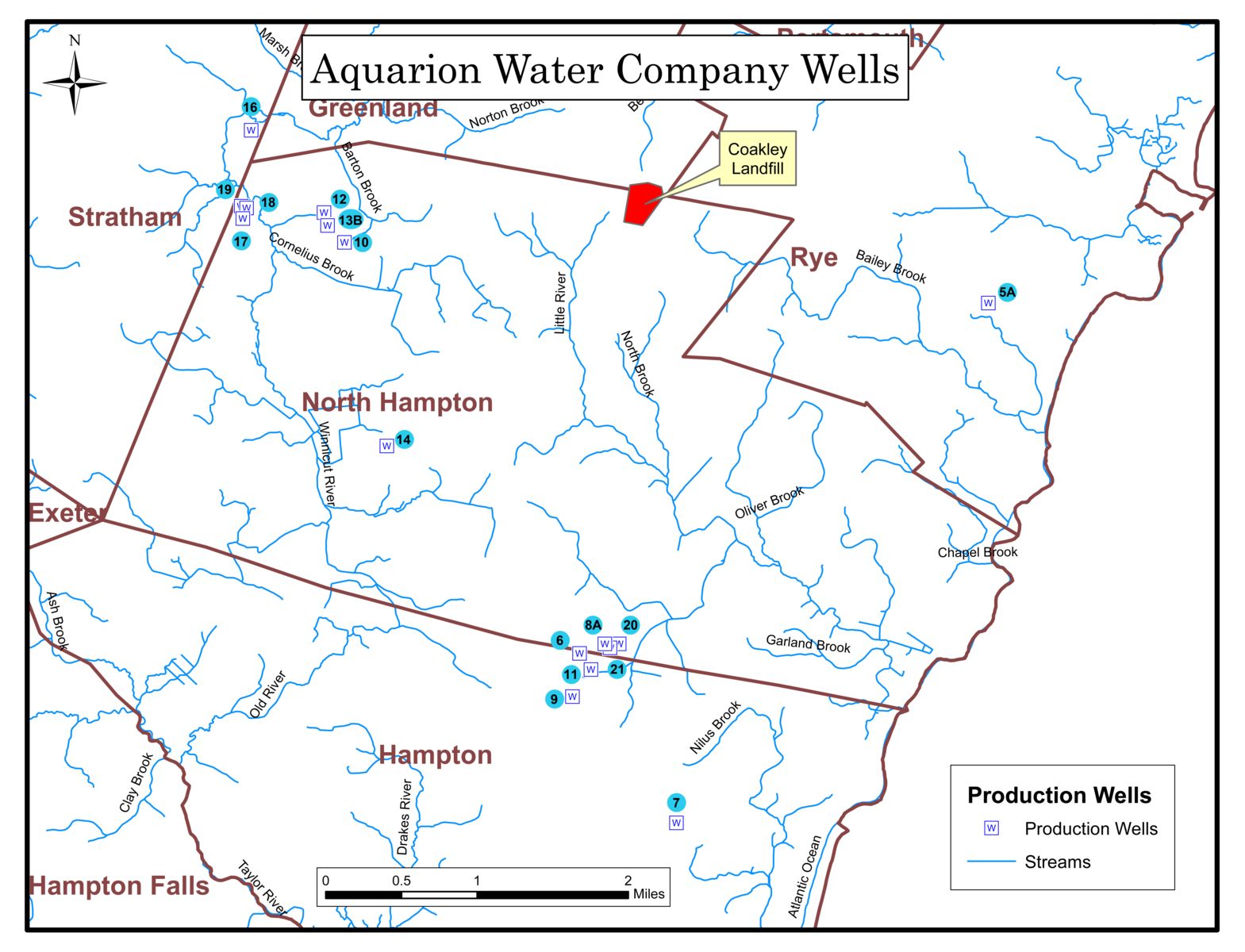NH PFAS FAQs
Throughout the northeast and across the nation, state and local officials, health departments, and water utilities including Aquarion have focused their attention on a group of man-made chemicals called per- and polyfluoroalkyl substances (PFAS) that have been detected in drinking waters, including public and private water supplies, and bottled water. Some health officials indicate that consumer products, food, and cookware represent the largest exposure of PFAS to people. However, drinking water contaminated with PFAS can also be a source of exposure.
Aquarion has been and will remain vigilant about this important issue, and will continue additional PFAS testing beyond compliance testing at some of our water sources. We will continue to share test results with our customers and state and local officials. We will also continue to work with the public health agencies and drinking water associations to ensure protection of our drinking water supplies, and delivery of high quality water to our customers.
Below are Aquarion’s latest sampling results and additional information on PFAS.
EPA PFAS Proposed Regulation
On March 15, 2023 the US EPA proposed a National Primary Drinking Water Regulation (NPDWR) for 6 of the following PFAS Compounds: Perfluorooctanoic acid (PFOA), Perfluorooctane sulfonic acid (PFOS), Perfluorononoctanoic acid (PFNA), Perfluorohexane sulfonic acid (PFHxS), Perfluorobutane sulfonic acid (PFBS), and Hexafluoropropylene oxide dimer acid (HFPO-DA, aka GenX Chemicals). Aquarion is continuing our compliance PFAS testing program in each of our water systems to ensure our customers receive the highest quality water achievable. This proposed rule does not require action until it is finalized at the end of 2023, however, Aquarion will proactively be working to meet the proposed NPDWR.
Below are the proposed Maximum Contaminant Levels (MCLs):
- PFOA – 4 ppt*
- PFOS – 4 ppt*
- PFNA, PFHxS, PFBS, and HFPO-DA – 1.0 Hazard Index (unitless)
* ppt – parts per trillion
For Aquarion’s Water System serving Hampton, North Hampton, and Rye, NH

Sample Results

Frequently Asked Questions (FAQs)
The New Hampshire Department of Environmental Services (NHDES) has set the following drinking water standards for four PFAS compounds:
- perfluorooctanoic acid (PFOA) - 12 ng/L
- perfluoroctanesulfonic acid (PFOS) - 15 ng/L
- perfluorononanoic acid (PFNA) - 11 ng/L
- perfluorohexanesulfonic acid (PFHxS) - 18 ng/L
Yes, PFAS have been detected in most of the wells, in most cases at very low concentrations. Although some wells (6, 9, 11 & 14) consistently show higher levels of more PFAS compounds than the other twelve wells, no compliance sample results have exceeded the Maximum Contaminant Levels.
- Aquarion has tested water from all of its wells, from some of the observation wells in the well fields, the entry points to the distribution system, and at various locations in the distribution system.
- Since October 2019, Aquarion has been collecting compliance samples from the entry points to the distribution system.
- Aquarion also completed bench testing and pilot testing on potential PFAS removal systems should treatment be needed in the future to comply with drinking water regulations.
PFAS can enter a drinking water supply through industrial and commercial releases to water or air, discharges from sewage treatment plants, leaching from septic systems and landfills, land application of contaminated sludge, and use of fire-fighting foam.
Currently, the exact sources of PFAS found in Aquarion’s wells are uncertain. Due to their presence in so many products used in society, PFAS appear to be almost ubiquitous in the environment. NHDES considers PFAS concentrations less than 10 ppt to be background levels. Aquarion is collaborating with NHDES to identify the potential sources of these compounds in our wells.
Aquarion has done a lot of work in conjunction with various stakeholders and experts to better understand the presence of PFAS in our wells, where it is coming from, and how to protect our wells and drinking water from PFAS. To date, several potential sources have been identified. One of these sources, a wastewater discharge from a nearby car wash, has been shut down by NHDES and is no longer discharging PFAS compounds into the ground near our Mill Road wells. Together, we are making progress.
There is still more to learn and do. Aquarion believes that it is important to identify, investigate and abate all significant potential sources of PFAS that could be contaminating drinking water supplies. The additional studies that are planned in the vicinity of the Coakley Landfill should be helpful in determining whether PFAS contamination from Coakley is migrating far enough to contaminate our wells and or private wells in the area. However, to date, there is no clear evidence that Coakley is contaminating our wells. Aquarion remains committed to working with our partners to protect private and public drinking water in the Hampton area.
Water is pumped from 16 state-approved wells in Hampton, North Hampton, Rye, and Stratham. It is treated and delivered to customers through an extensive underground piping system.
The Aquarion water system serves about 24,000 residents in Hampton, North Hampton, and Rye, plus thousands of visitors and tourists.
Aquarion’s wells supply an average of 2.1 million gallons of water per day to the system.

Since then, Well 6 has remained off except when needed to meet peak summer demands. Well 6 is used last, only when needed, and blended with other wells to minimize PFAS concentrations in tap water.

